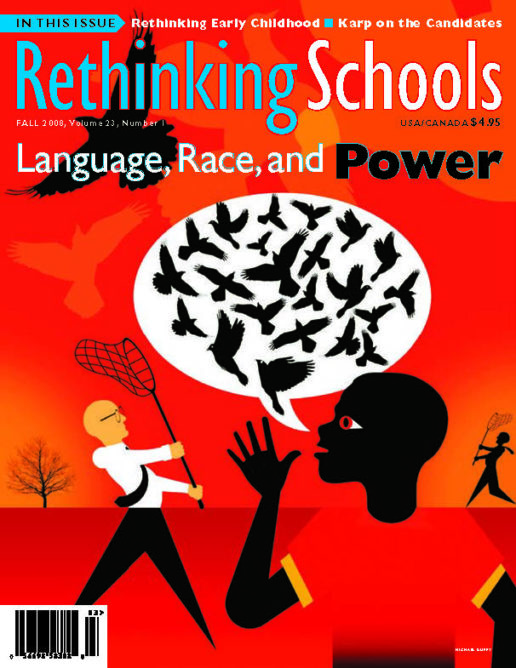Preview of Article:
Afghanistan’s Ghosts
Activities provide background for teaching The Kite Runner and the 'good war'
Illustrator: ©2008 Paramount Vantage/Phil Bray
Khaled Hosseini’s novel, The Kite Runner, is almost certainly the most popular book about Afghanistan ever published in the United States. And increasingly it’s being adopted in high schools across the country. But The Kite Runner is not simply a bestselling novel “set” in Afghanistan. It’s about a region of the world at war. As an English teacher, I knew that I couldn’t teach The Kite Runner without first grounding students in a history of the social conflicts there that framed the novel.
The Kite Runner is a powerful personal narrative of a young boy growing up in Kabul, Afghanistan, and the lengths he takes to escape his guilt. The story hinges around a horrific episode in which the main character, Amir, watches silently as his best friend, Hassan, is raped. This wrenching incident haunts Amir throughout his life and touches on themes of privilege, power, inequality, guilt, forgiveness, redemption, and hope that I thought my students would find compelling. But I was concerned about the novel’s limited depiction of the social conflicts and wars that had gripped much of the country for decades — and about the Hollywood-type clichés that thread through the novel. For example, The Kite Runner offers a contrived and cartoonish plot twist with the former boy rapist, Assef, growing up to be a Big Bad Taliban thug — suggesting implicitly that the Taliban are simply evil, requiring no analysis about their social origins.
Such caricatures may offer comforting justification for today’s U.S. military involvement there, but they do a disservice to our students. I want my language arts curriculum to move us closer to the real world. I hope my students will recognize the importance of searching for the roots of social problems, and come to feel themselves connected to the lives of others across time and political boundaries, not beholden to Hollywood plot lines.

